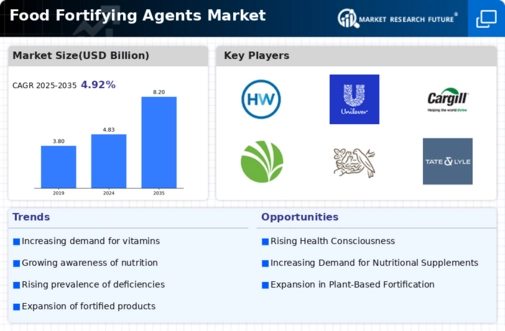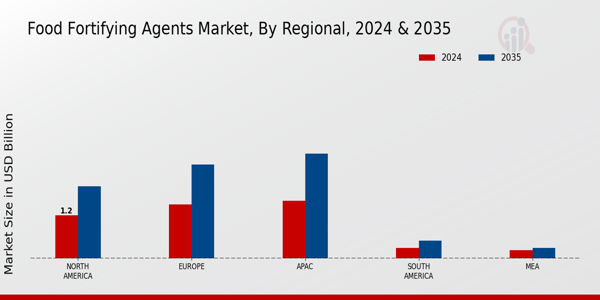Market Analysis
In-depth Analysis of Food fortifying agents Market Industry Landscape
The market dynamics of the Food Fortifying Agents market reflect a growing emphasis on health and nutrition in the food industry. As consumer awareness regarding the importance of fortified foods increases, the demand for food fortifying agents has witnessed a notable surge. These agents play a crucial role in enhancing the nutritional content of various food products, addressing deficiencies and promoting overall well-being. One key driver of this market is the rising prevalence of nutritional deficiencies and related health concerns. In an era where fast-paced lifestyles often lead to imbalanced diets, consumers are increasingly seeking fortified foods to supplement essential vitamins and minerals. Food fortifying agents, such as vitamins, minerals, and amino acids, offer a convenient solution to bridge nutritional gaps, contributing to the overall growth of the market. Government initiatives and regulations also play a significant role in shaping the market dynamics. Many countries have implemented regulations mandating the fortification of staple foods to combat specific nutrient deficiencies within their populations. These regulatory measures create a favorable environment for the food fortifying agents market, compelling food manufacturers to incorporate these agents into their products to comply with the standards. Moreover, the growing trend of personalized nutrition has further propelled the demand for food fortifying agents. Consumers are increasingly seeking customized solutions that cater to their unique nutritional needs and preferences. This has led to a surge in the development of innovative fortifying agents and fortified food products targeting specific health concerns, such as bone health, immunity, and cognitive function. In addition to these drivers, technological advancements in food fortification techniques have had a profound impact on the market dynamics. The development of advanced delivery systems and encapsulation technologies has enhanced the stability and bioavailability of fortifying agents, allowing for their efficient incorporation into a wide range of food and beverage products. This has not only expanded the application scope of food fortifying agents but also contributed to the market's overall growth. However, the market is not without its challenges. Consumer skepticism and concerns about the safety and efficacy of fortified foods remain significant barriers. Education and awareness campaigns are essential to address these concerns and build consumer trust in the benefits of fortified products. Additionally, the cost implications of fortification may pose challenges for manufacturers, as the production of fortified foods can be more expensive than non-fortified alternatives. As the market continues to evolve, collaboration and partnerships within the food industry become increasingly important. Collaboration between food manufacturers, research institutions, and regulatory bodies can foster innovation, address challenges, and create a sustainable framework for the growth of the food fortifying agents market. This collaborative approach can lead to the development of novel fortifying agents, improved production processes, and effective communication strategies to educate consumers about the positive impact of fortified foods on their health.













Leave a Comment